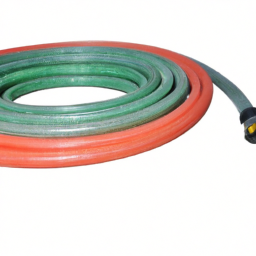Garden Hose What Thread Size
Table of Contents []
What Thread Size Is A Garden Hose
Introduction
Before getting into the details of the thread size for a garden hose, it's important to know more about the hose itself. First, let's take a look at the components of a garden hose, what you should consider when selecting one, and the sizes and lengths of hoses available. Then, we can move on to the thread size, how to determine and measure it, the standard sizes, and different uses for this type of hose. Finally, we'll discuss the importance of using the correct thread size with the right fixture or valve, and provide additional related information to answer common questions.
Components of a Garden Hose
Hoses come in a variety of lengths and sizes, but all have some basic components in common. At one end of the hose, there is the male coupling, which is either brass or plastic and has threads on the outside. At the other end of the hose is the female swivel coupling, which is typically metal and also has threads on the inside. Inside the hose, there is a rubber or vinyl tube and usually several other layers. The outer layer of most hoses is a water-resistant material to protect the inner layers.
Finding the Right Garden Hose
When selecting a garden hose, there are several factors to consider. First, review the materials the product is made of for durability and compatibility with the purpose you are using it for. Consider how long the hose needs to be based on the water spigot's location and your work area. Think about how much pressure the hose can handle based on that purpose and the materials it is constructed with. Finally, be sure that the male coupling can fit the water spigot, kink-resistant, and that the female swivel coupling can fit the hose end connection you need.
Measurement and Standard Thread Size of a Garden Hose
Most garden hoses are designed to fit three-fourths of an inch National Pipe Thread (NPT) with 11.5 threads per inch (TPI). It is important to make sure that the couplings on both ends of the hose are the same diameter and thread size. The standard thread size for garden hoses is usually three-fourths of an inch (3/4" ) NPT, with 11.5 TPI, which is usually referred to as "GHT" for Garden Hose Thread. The male and female ends of the garden hose are usually the same size.
Thread Size Measurement
Measuring the thread size accurately is important for making sure the fittings and connectors fit together properly. To measure the thread size of a garden hose, you need a thread pitch gauge or calliper. This type of gauge is used to measure both the outside diameter of the male coupling and the inside diameter of the female swivel coupling. The best way to measure is to screw the male end into the female swivel coupling, and then measure with the gauge. If you don't have a thread pitch gauge, you can wrap a piece of tape around the male outside diameter to see if it fits into a standard thread size measuring calliper.
Different Uses for Garden Hoses
Garden hoses have a variety of uses, from watering gardens and lawns to cleaning cars, decks and patios. Some garden hoses are designed specifically for use with a pressure washer or for applications where the hose must be able to handle a lot of water pressure. Depending on the purpose, you may want to select a diameter or length of hose that is suitable for the job. You'll also want to make sure the hose is rated for hot water, if that is necessary.
Importance of the Correct Thread Size
When attaching a garden hose to a spigot or other fitting, it is important to use the correct thread size. The wrong size could lead to a hose leak or block the water flow, and eventually damage the hose. Additionally, using a different size of pipe thread could lead to improper connections that could cause leakage. For this reason, it is recommended to always use the correct size of thread with the right fixture or valve needed for the job.
Summary
Garden hoses are a versatile tool used for a variety of tasks from watering plants to cleaning cars. Knowing the components and sizes of garden hoses is important for selecting the right one for the job. Measuring the thread size accurately is also part of finding the right hose and making sure it fits properly with the spigot and other fittings. Overall, it is essential to use the correct thread size with the right fixture or valve in order to prevent potential hose leakage or damage.

Previous Page
Next Page
